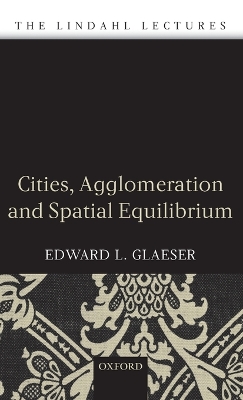220 million Americans crowd together in the 3% of the country that is urban. 35 million people live in the vast metropolis of Tokyo, the most productive urban area in the world. The central city of Mumbai alone has 12 million people, and Shanghai almost as many. We choose to live cheek by jowl, in a planet with vast amounts of space. Yet despite all of the land available to us, we choose to live in proximity to cities. Using economics to understand this phenomenon, the urban economist uses the tools of economic theory and empirical data to explain why cities exist and to analyze urban issues such as housing, education, crime, poverty and social interaction.
Drawing on the success of his Lindahl lectures, Edward Glaeser provides a rigorous account of his research and unique thinking on cities. Using a series of simple models and economic theory, Glaeser illustrates the primary features of urban economics including the concepts of spatial equilibrium and agglomeration economies. Written for a mathematically inclined audience with an interest in urban economics and cities, the book is written to be accessible to theorists and non-theorists alike and should provide a basis for further empirical work.
- ISBN10 019929044X
- ISBN13 9780199290444
- Publish Date 3 July 2008
- Publish Status Active
- Publish Country GB
- Imprint Oxford University Press
- Format Hardcover
- Pages 286
- Language English
